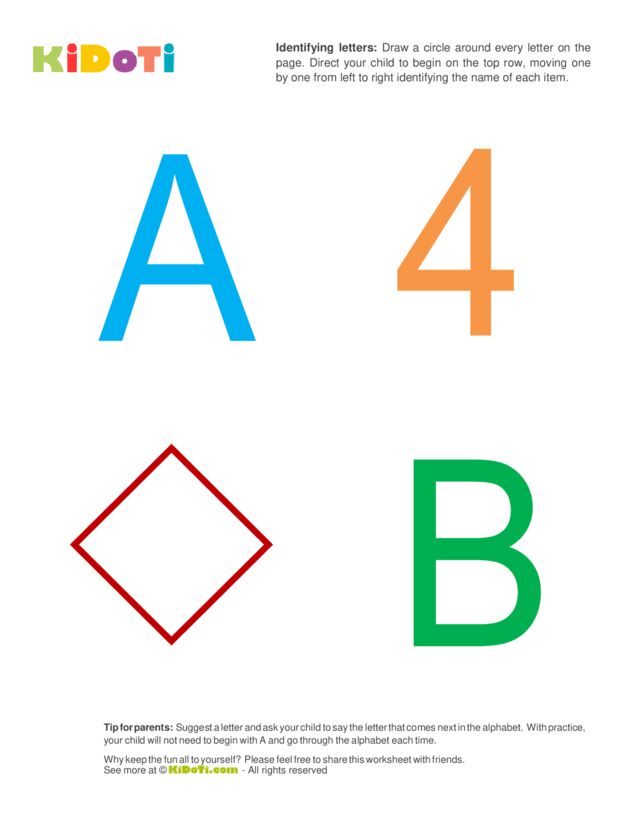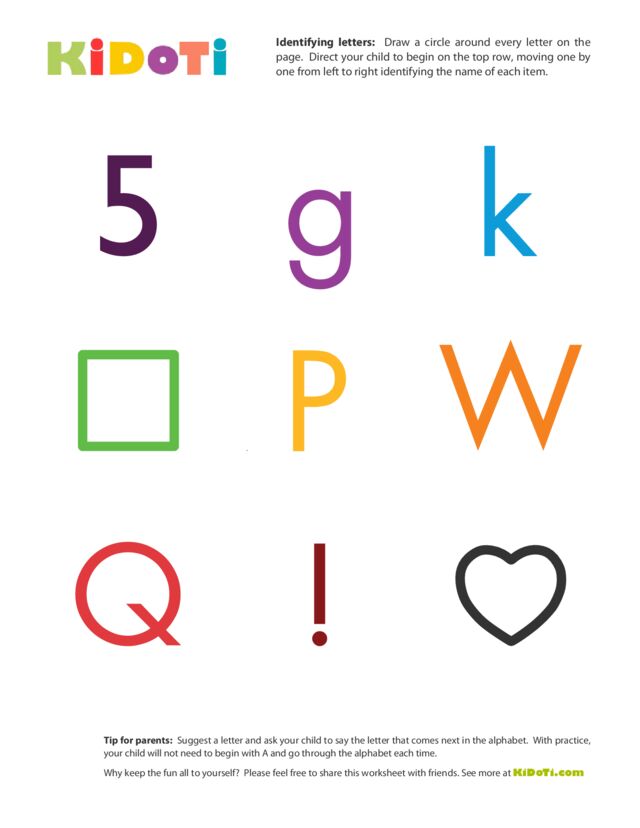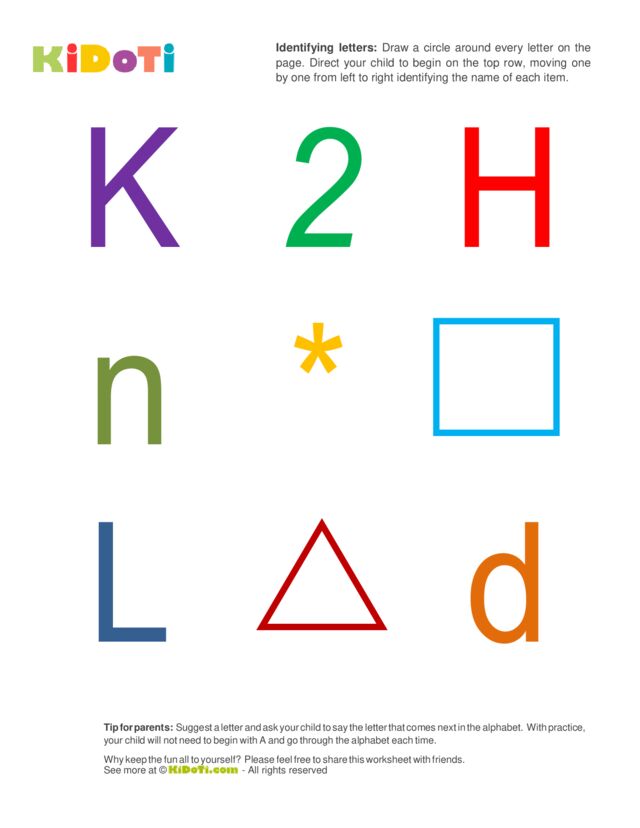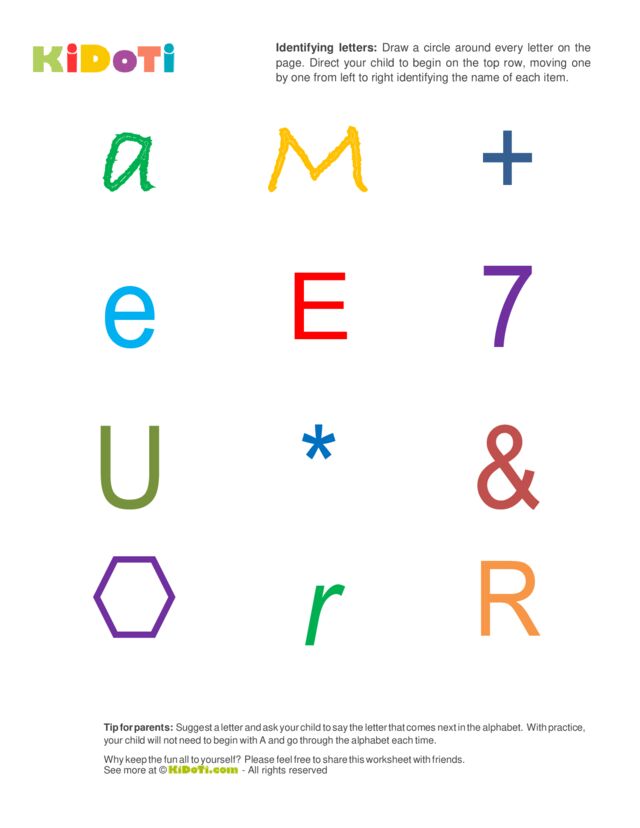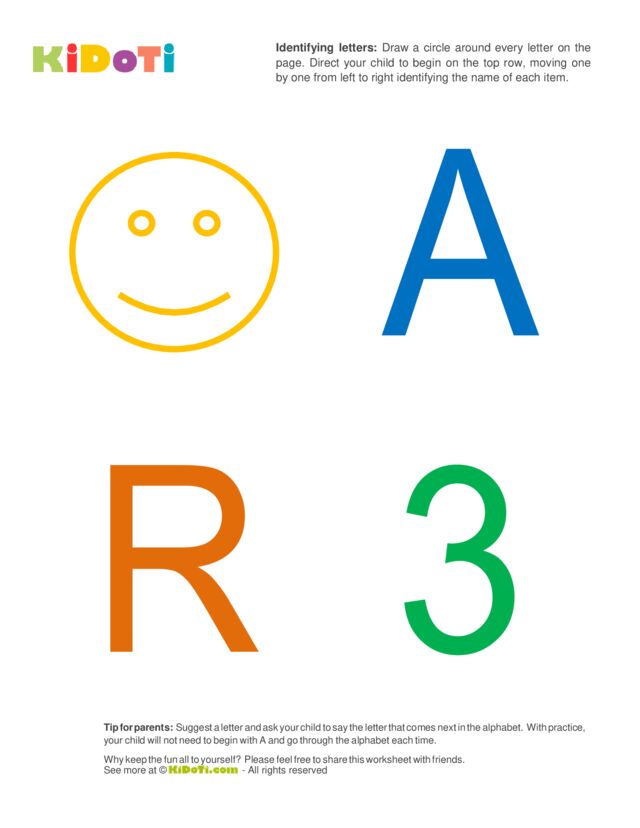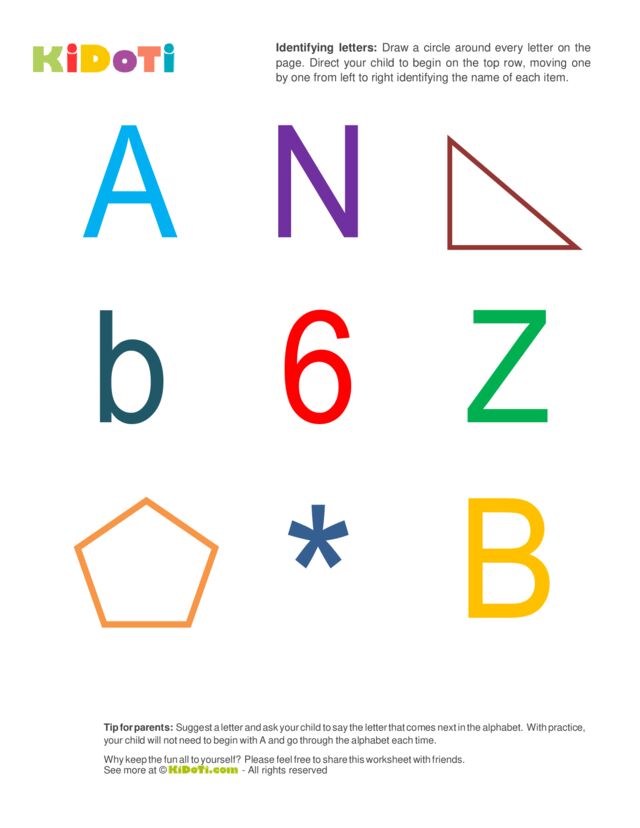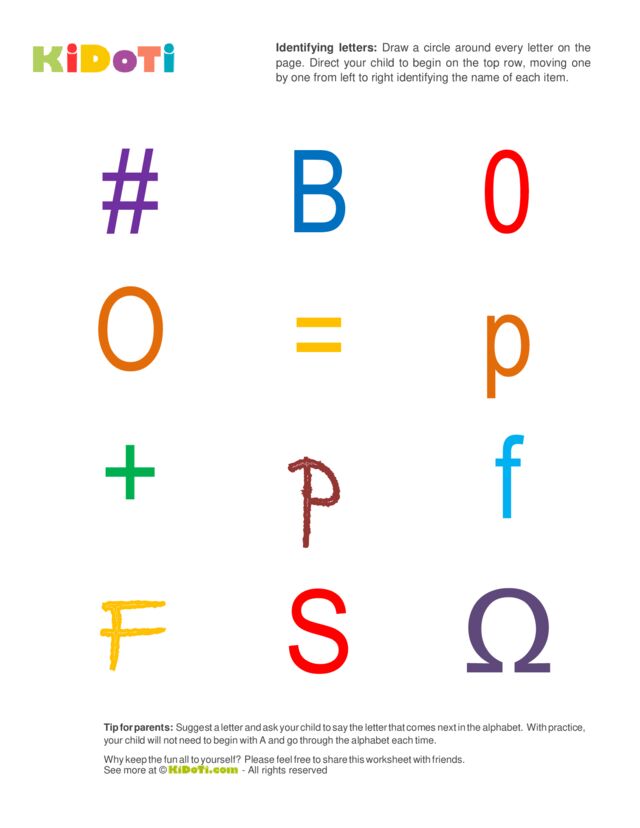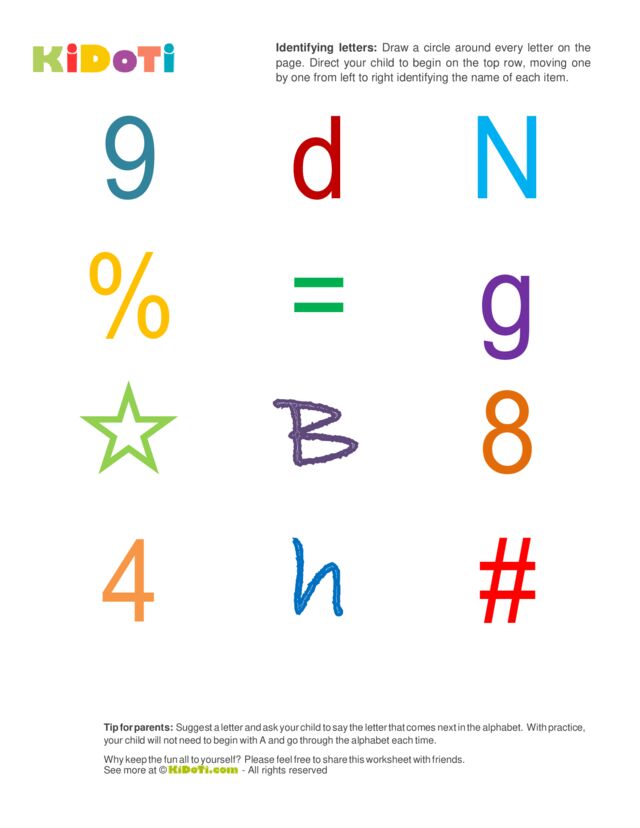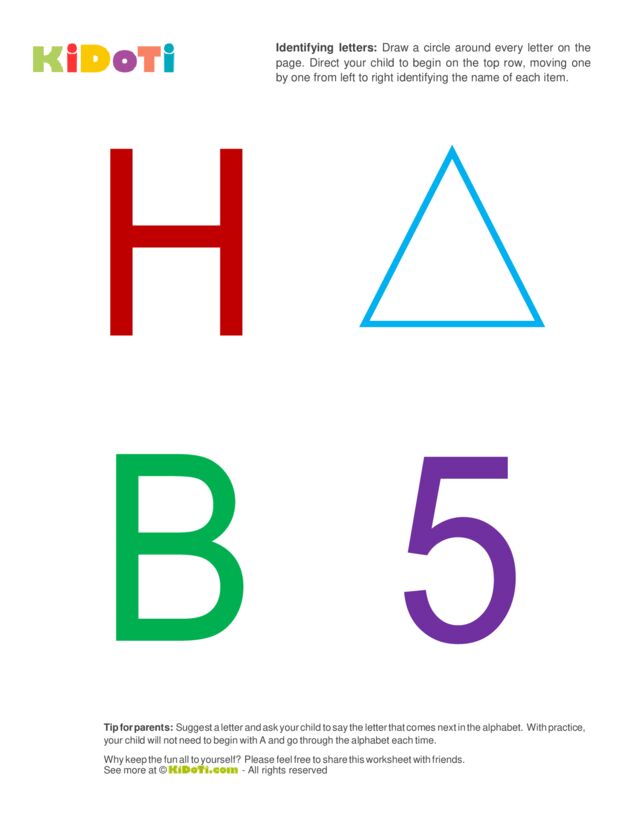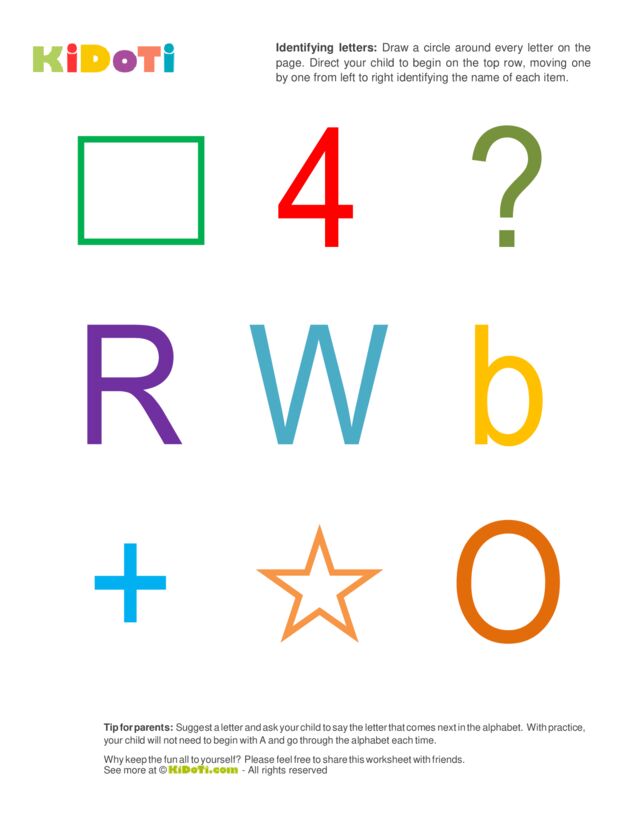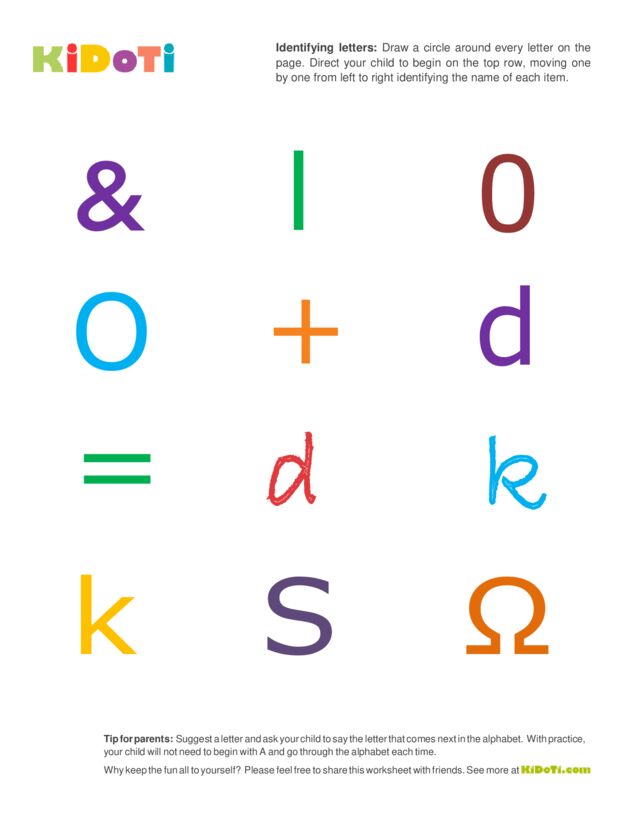The first step in letter awareness is learning to identify letters from the variety of other characters that typically appear on a page, including numbers, symbols and punctuation. This skill requires strong visual discrimination skills, since many letters look alike and many letters resemble other symbols such as $, &, and @. Children must also learn that letters can be written in either upper case or lower case and in a variety of fonts. The following worksheets will help your child practice identifying letters in many different styles from a variety of other non-letter characters.
Learning to identify letters is important
When a young child first sees letters on a sign or in a book, these are simply random configurations of lines and curves. He must learn to differentiate symbols and shapes from a variety of styles of letters that he will see. This learning is accomplished through practice and exposure to letters and is an important first step when learning to read.
Tips for using these identifying letters worksheets
The three beginning level worksheets can help you assess your child’s knowledge of letters. Let him know that only one figure on each line is a letter. Ask him to point to each letter that he sees. As he points to a letter, ask him to name it or name it for him if he is not yet able to to do that. If he incorrectly points to a shape or number, tell him the name of the shape or number and ask him to try again to find a letter.
The intermediate level worksheets are more challenging, with the addition of punctuation marks and lowercase letters. Direct your child to move his pointer finger slowly across each line, from the left side of the page to the right, stopping at each letter, symbol or mark. Again, ask your child to name the letters as he points to them. If this level is somewhat difficult for your child, you may tell him to first find symbols or marks that do not look like letters and cross those out. Clues such as “a triangle and a square are not letters” can be helpful. If your child needs a lot of direction with this page, point out the letters for him and then come back to this worksheet at a later time.
Children who can name the letters of the alphabet are ready to tackle the advanced identifying letters worksheets. These can be challenging because the letters are also shown in a stylized font. Suggest that your child move his finger slowly across each row as he decides which marks are letters. It may be easier for him to identify the letters if he first crosses out any symbol that he knows is not a letter. Then, he can return to the top of the worksheet and carefully look at the symbols that were not crossed out. If the stylized letters are too challenging for your child, try identifying them by name (lowercase e or uppercase R, for example) and then ask him to find that letter on the page.
Extra activities to supplement these identifying letters worksheets
- Use shaving cream to write letters on a bathtub wall during bath time. Cleanup is super easy and kids love playing games in the bath.
- When walking through a shopping mall, pause outside each store and ask your child to count the number of letters or words in each store’s name.
- A computer keyboard is a great way for your child to practice letters. Using a large font and encourage your child to type his favorite letters.
- Reinforce letter names with letter-shaped cookie cutters. You can make letter-shaped cookies, pancakes or pretend cookies with playdoh.
- Suggest a letter and ask your child to say the next letter that comes in the alphabet. With practice, your child will not need to begin with A and go through the alphabet each time.
- Explain to your child that letters can be printed in different fonts. Show your child letters from headlines in a popular magazine to illustrate a few examples.
- Sitting at the computer with your child, say a word and ask him to type the first letter of that word. Or trade roles and have your child suggest a word while you type.
- Explain to your child that every sentence has two parts: letters and punctuation. Letters that form words for us to read and punctuation that tells us when to pause, stop, or change our voice.
- Explain to your child that a comma indicates when to take a short pause when you’re reading and that a period tells you when to take a longer pause.
- Write one or two uppercase letters on index cards for your child to hold as you walk through a shopping mall. Encourage him to spot that letter on store signs as you shop.
